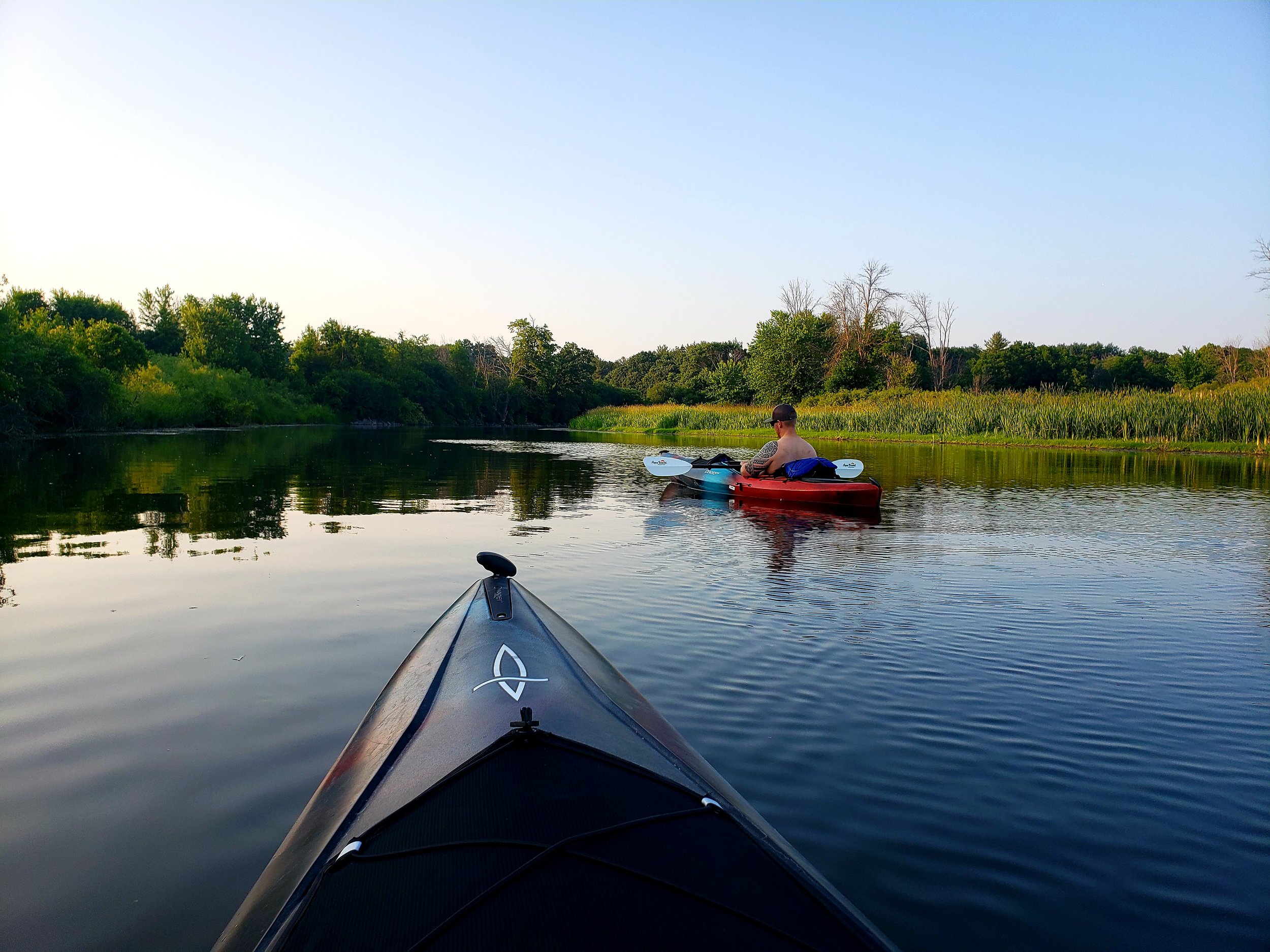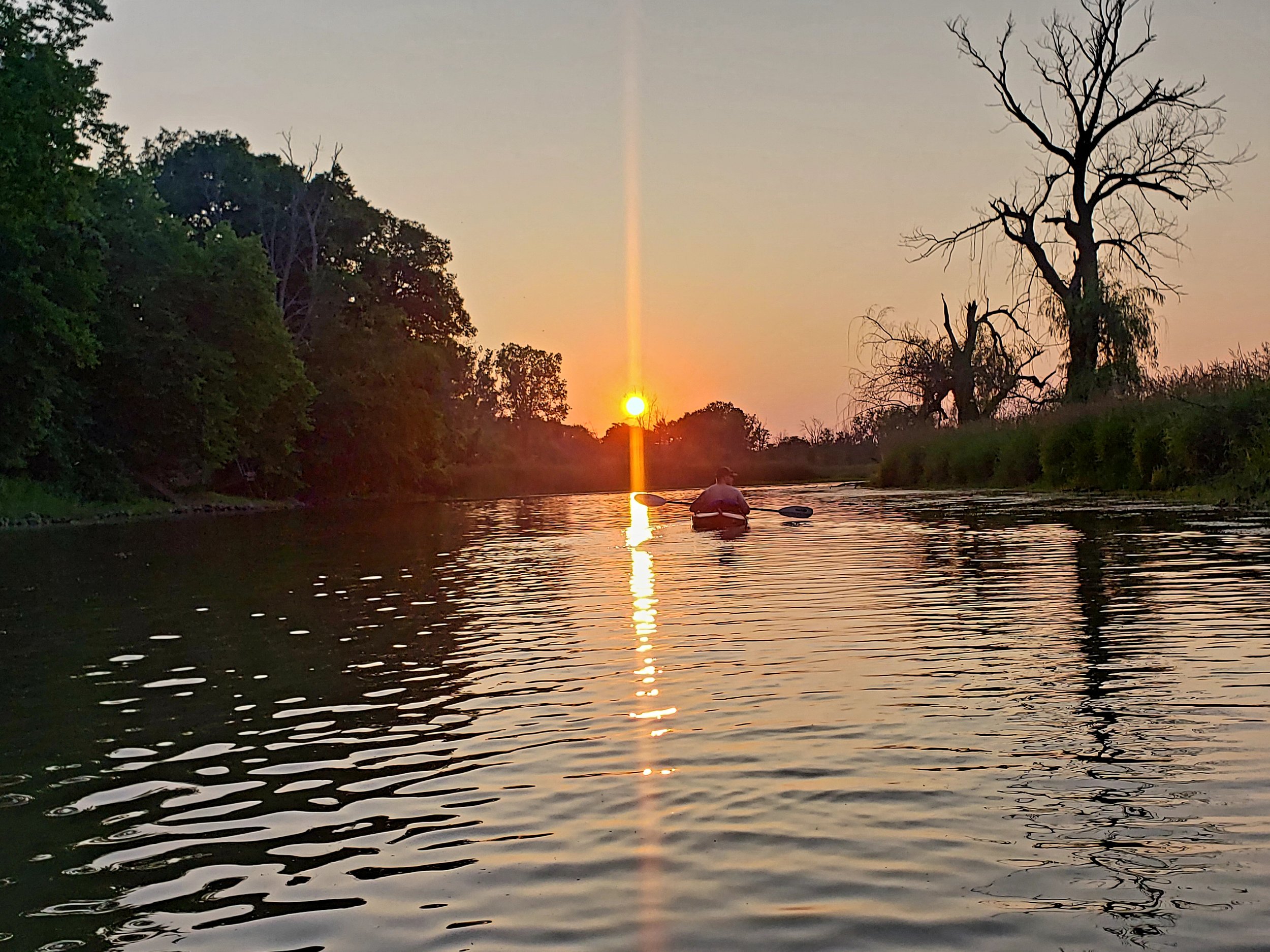What Being Grateful Means: How to Adopt an Attitude of Gratitude
As a therapist, I have learned about gratitude and talk about it a lot with clients.
There are so many benefits to it, mentally, emotionally, and even physically.
Even with this knowledge of how helpful it is, I still wasn’t using it enough to make it a normal practice in my life - until recently.
With the grief and life transitions I’ve experienced over the past year, I recognized a need for more intentional use of my healthy coping skills and with that, came a deeper desire to live with gratitude.
I chose to write about this today because I had a realization yesterday that I felt would be helpful to share with others.
I realized that, while kayaking, I was using gratitude without thinking about it, and that was a great accomplishment for me.
I often talk with clients about consistency and practice with skills, so that they become “easier” and more natural to use, and while I was paddling down the river, I had that experience for myself.
After being more intentional and consistent with practicing gratitude, it has started to become a part of my daily life, an “attitude of gratitude” as it has been called.
In this post, I’ll share what being grateful means, benefits of practicing gratitude, and suggestions for how to begin your gratitude practices, including a simple gratitude exercise that you can start using right now. You can also purchase my 39-page gratitude journal below.
What Grateful Means?
Simply stated, being grateful means feeling or showing appreciation for someone or something. Studies have found a wide range of benefits* that come as a result of practicing gratitude, including:
Better sleep and mood
Decrease in stress and anxiety
Increase in self-esteem
Improved immunity
Decrease in chronic pain and risk of disease
Beginning Your Gratitude Practice
Here are a few suggestions for you to start practicing gratitude regularly.
I suggest starting with a weekly practice and increasing slowly from there.
Write in a gratitude journal (with or without prompts)
Make a list of 3 things you are grateful for each day
Use a gratitude app, which often have notifications that can serve as a helpful reminder to do your gratitude practice
Spend time in nature while getting in touch with what you are grateful for
Show your gratitude to someone else (pets included!)
This might include saying thank you or showing thanks through acts of kindness or gifts
Gratitude Exercise
For this exercise, I’m going to share prompts based on my experience with gratitude yesterday.
I’ll share the prompts with an example for each one. You’ll also have the option to download the PDF that goes along with this exercise by joining my email list below.
Notice that each prompt is worded intentionally to recognize that you are grateful that you get to do, be with, or enjoy these things. It can be helpful to word your responses in the same way, either written or verbally, to help instill this way of thinking (eg. I am grateful that I get to…).
Try to list at least one thing you are grateful for to go along with each prompt.
Someone You Get to Spend Time With
Feeling grateful for another person is an excellent way to feel connected. You can further that connection by expressing your gratitude to that person by telling or showing them in some way.
While kayaking, I felt grateful that I got to spend that time with my husband, with bonus points for doing something that we both enjoy on a beautiful day.
Something New You Get to Try
Life can feel stagnant at times, especially, it seems, as we grow older and settle into routines. It’s important to keep trying new things, no matter how small. Trying new things can keep life feeling fresh and exciting, and it can also help you gain confidence through learning new information and skills.
My husband found a song by a band that we had not heard before, and we listened to this band’s music on the whole kayaking trip. I felt grateful that there is new music to be found and really enjoy.
Something You Get to Do
I find that framing it in this way, that it’s something we get to do, helps in finding something to be grateful for everyday. It might be something you do regularly without realizing that you are, or can be, grateful to do it, such as making your own coffee in the morning or being able to work from home.
I felt grateful that we were able to take a spontaneous, last minute kayaking trip on a late Sunday afternoon. I also felt grateful that it was Sunday and we had time to do it.
Somewhere You Get to Go
Similar to the prompt above, it can be helpful to think about places you go regularly and change your perspective to view them as places you get to go. If you have trouble thinking of a place you already go, this is a great time to go somewhere new. Is there a coffee shop you’ve really wanted to try? Or maybe a new area to walk near where you live?
We live near the Fox River, and although I drive past it and over it numerous times every week, I found myself thinking about how grateful and happy I am to live by this river to enjoy it in various ways - whether that is kayaking, fishing, walking along it, or enjoying the wildlife. Side note, I saw my first ever wild beaver while we were kayaking!
A Decision You Get to Make
In working with my clients, I often hear them question their decisions, often due to difficulty trusting themselves or lacking confidence in their decision making skills. I love the addition of this prompt because I think it can not only be a good gratitude exercise but it can also help improve trust in yourself and confidence in your decisions.
Before my husband and I started dating, we both knew that we did not want children. Everyone told us that we might change our minds, and I don’t fault them for saying that. Sometimes people do change their minds, but we have both been confident in this choice, individually and together.
With that, I was not only grateful to have made the decision to go kayaking, but I was also grateful to have stood true in our decision to not have children, so we can live the life that we want and that works for us.
Get your copy of the journal now.
Start your consistent gratitude practice today!
Final Notes
Like with all coping skills and healthy habits, it takes practice and consistency to really feel the impact and for these skills and habits to become a more natural part of your daily life.
With that said, it can be important and helpful to remember that consistency doesn’t mean it has to be done every day.
You can start an intentional gratitude practice once per week or in whatever frequency works for you.
As long as you stay consistent with that frequency, I believe, and I have seen in my clients and in myself, that you will feel the benefits of building an attitude of gratitude and making gratitude a regular part of your life.
*https://www.health.harvard.edu/healthbeat/giving-thanks-can-make-you-happier




